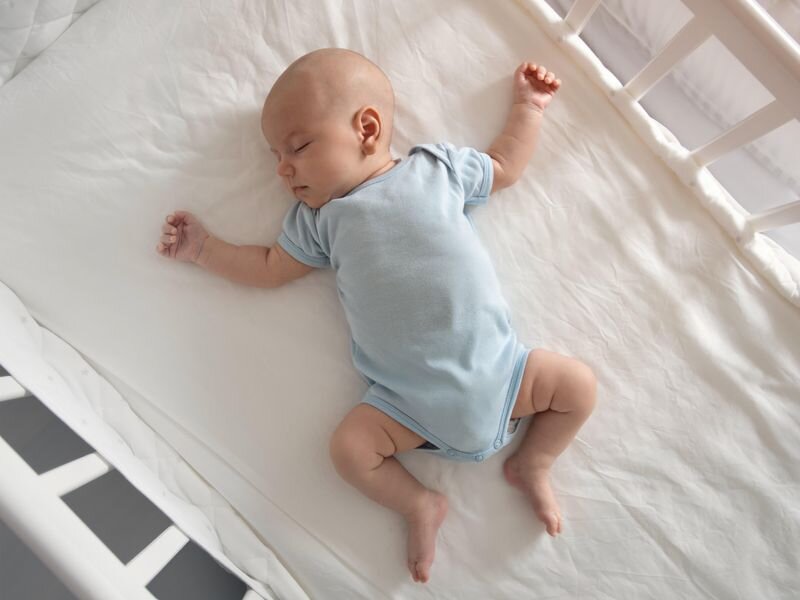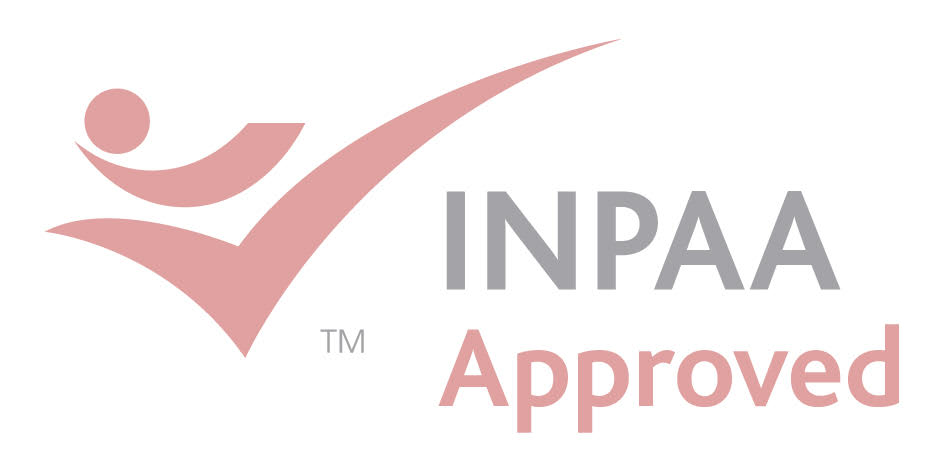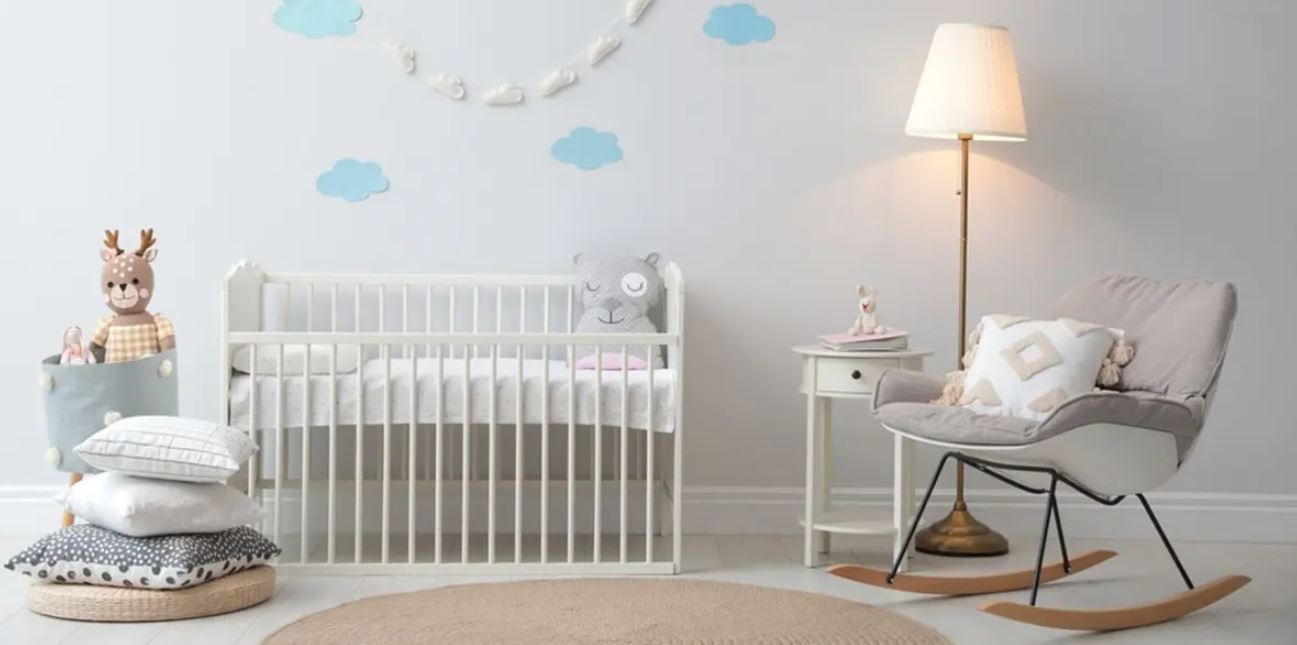Baby Proofing Your Nursery: Creating a Safe Haven for Your Little One
The nursery or baby’s room is a place of comfort and rest, but it’s also filled with potential hazards that can pose risks to your baby’s safety. From furniture tip overs to loose cords and suffocation risks, ensuring your baby’s room is safe requires careful planning and attention. Installing a Bi-Fold Retractable Baby Gate at the nursery entrance provides a flexible safety solution that blends seamlessly with your home.
For added security, a Mesh Retractable Baby Gate can be used to section off areas, keeping your baby safe while allowing for easy movement when needed. With these precautions in place, your nursery becomes a secure and peaceful space for your little one to grow, play, and rest.
Why Baby Proofing the Nursery is Essential
As your baby starts to move, crawl, and explore, even the most seemingly harmless items can become a danger. The baby room is where your child will spend much of their time, so ensuring this space is free from hazards like choking, suffocation, and falling risks is crucial. By baby proofing the nursery, you’re creating a safe haven for your child, while also giving yourself the peace of mind that they are protected as they explore their surroundings.
From securing furniture to ensuring a safe sleep environment, every step you take to baby proof the nursery makes it a safer place for your little one.
Safe Sleep Environment: Ensuring Restful and Risk-Free Sleep
One of the most important aspects of baby proofing the nursery is creating a safe sleep environment. Babies are vulnerable to risks like suffocation and entanglement during sleep, so it’s essential to ensure their cot or crib is properly set up:
- Use a Safe Cot or Crib: Ensure your cot meets Australian/New Zealand Standard AS/NZS 2172. The mattress should fit snugly with no more than two fingers’ width of space between the mattress and the crib sides.
- No Soft Bedding or Toys: Avoid using pillows, blankets, stuffed animals, or cot bumpers. These items increase the risk of suffocation and should be kept out of the crib.
- Dress Your Baby Properly for Sleep: Instead of loose blankets, opt for a baby sleeping bag or well secured bedding. Ensure your baby’s head and face remain uncovered during sleep to avoid suffocation or overheating.
- Place Your Baby on Their Back: Always place your baby on their back to sleep, as this is the safest sleep position to reduce the risk of Sudden Infant Death Syndrome (SIDS).
Creating a safe sleep environment is a top priority when baby proofing the nursery, as it directly impacts your baby’s wellbeing during rest.

Furniture Tip Overs: Preventing Falls and Injuries
Heavy furniture in the nursery can pose a significant danger if it is not properly secured. Babies and toddlers love to climb and explore, so it’s important to ensure all furniture is anchored to prevent tipping:
- Anchor All Furniture: Use sturdy furniture straps or L-brackets to secure dressers, bookcases, and changing tables to the wall. Make sure to regularly check these anchors to ensure they remain secure. Contact us if you for expert advice on Furniture Anchors & Edging.
- Avoid Front Heavy Furniture: Be cautious with dressers or cabinets that are front heavy, as they can easily tip if drawers are pulled out.
- Distribute Weight Evenly: Store heavier items, like books and large toys, in lower drawers or on lower shelves to reduce the risk of tip overs.
- Keep Toys Off Tall Furniture: Avoid placing toys or other tempting items on top of furniture, which could encourage your child to climb.
Securing all furniture is essential for preventing accidents and creating a safer room where your child can play freely.
Window Safety: Minimising Falls and Strangulation Risks
Windows in the baby’s room can pose serious risks, especially if they are easily accessible or have dangling cords. Taking steps to secure windows will significantly reduce the chance of accidents:
- Install Window Guards or Stops: Fit windows with guards or stops to prevent them from opening more than 10 cm. This prevents falls while still allowing for ventilation. Contact us for Window Safety Solutions
- Choose Cordless Blinds: Opt for cordless blinds or window coverings to eliminate the risk of strangulation. If cordless options aren’t possible, use cord wraps or safety devices to keep cords well out of reach.
- Keep Cots Away from Windows: Position your baby’s cot or play area away from windows to prevent them from climbing up to windowsills or accessing hanging cords.
Ensuring that windows are secure is an important step in baby proofing the nursery, as it prevents both falls and strangulation hazards.
Electrical Safety: Keeping Cords and Devices Secure
Loose cords and electrical devices pose significant risks in the baby’s room, as they can lead to entanglement, strangulation, or electrical shocks. Here’s how to baby proof the room against electrical hazards:
- Install Outlet Covers: Use child proof covers on all electrical outlets in the baby’s room to prevent your child from inserting objects into them.
- Keep Cords Out of Reach: Use cord wraps, clips, or shorteners to secure cords from lamps, baby monitors, and other devices tightly against walls or furniture. Ensure that no cords are dangling within reach.
- Avoid Overloading Outlets: Be mindful not to plug too many devices into a single outlet, as this can lead to overheating and potential fire hazards.
By taking these steps, you can minimise the risk of electrical accidents in your baby’s room.
Choking Hazards: Removing Small and Loose Items
Small objects can quickly become choking hazards if they are left within a baby’s reach. It’s important to regularly inspect the nursery for items that could be dangerous:
- Regularly Check the Floor: Frequently sweep and check the floor for small items like buttons, coins, or beads that your child could put in their mouth.
- Secure Small Decorative Items: Avoid placing small or loose decorative items, such as photo frames or bunting, near the cot or play area. Ensure that any wall decorations are securely fastened.
- Store Small Toys in Safe Containers: Keep smaller toys in containers with lids or on high shelves where your baby cannot access them.
By staying vigilant about potential choking hazards, you help ensure that your baby’s room remains a safe and secure space.
Creating a Safe Nursery for Your Baby
Baby proofing the nursery is an essential part of ensuring your child’s safety as they grow and explore. Use a baby gate to keep the nursery a safe space. From securing furniture to managing electrical cords and ensuring a safe sleep environment, taking these precautions will allow your baby to enjoy their room while giving you peace of mind.
For expert advice and baby proofing products, contact First Steps Safe Steps. Let us help you create the safest and most nurturing space for your little one to thrive.


